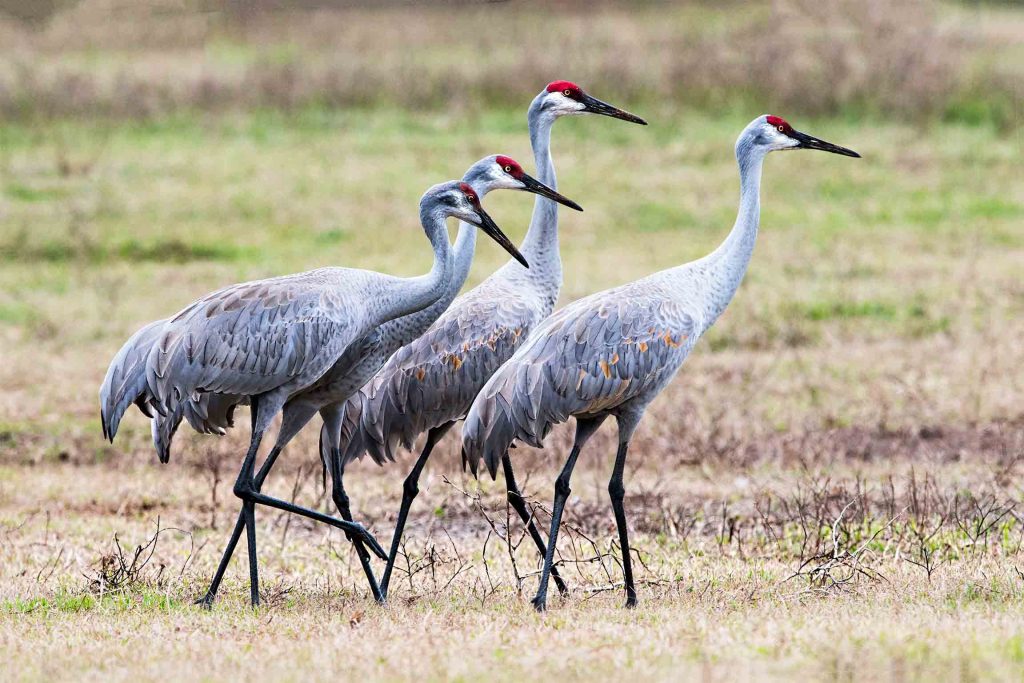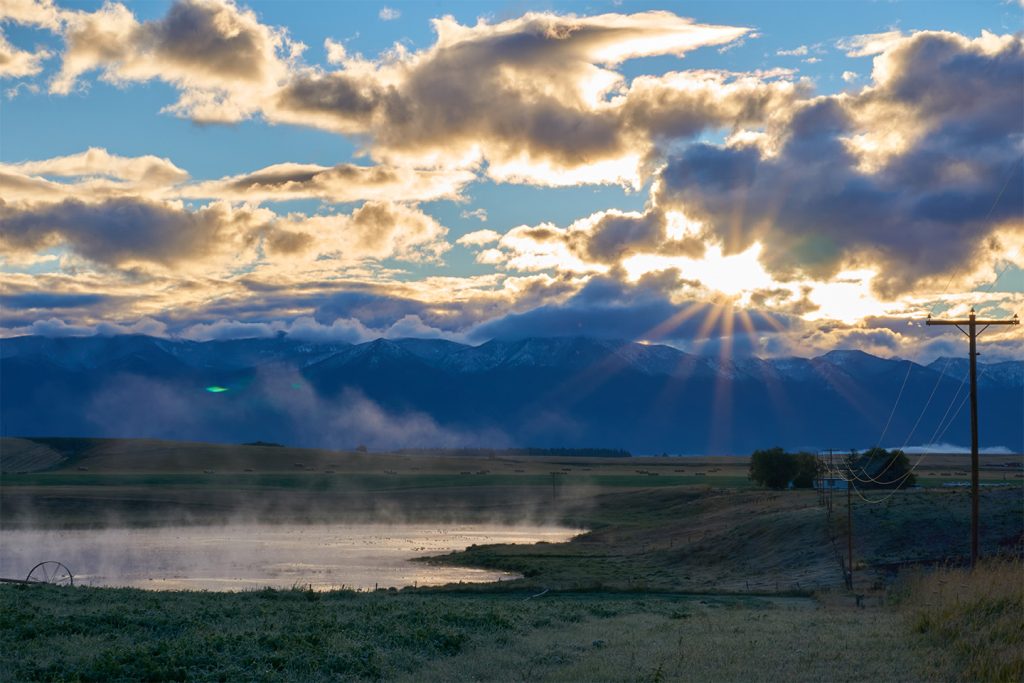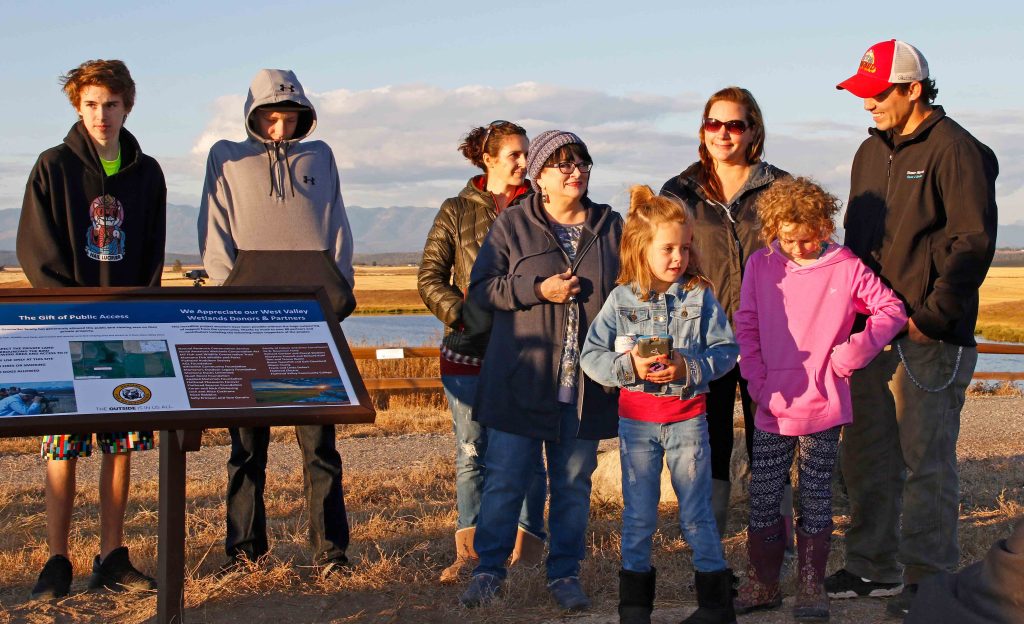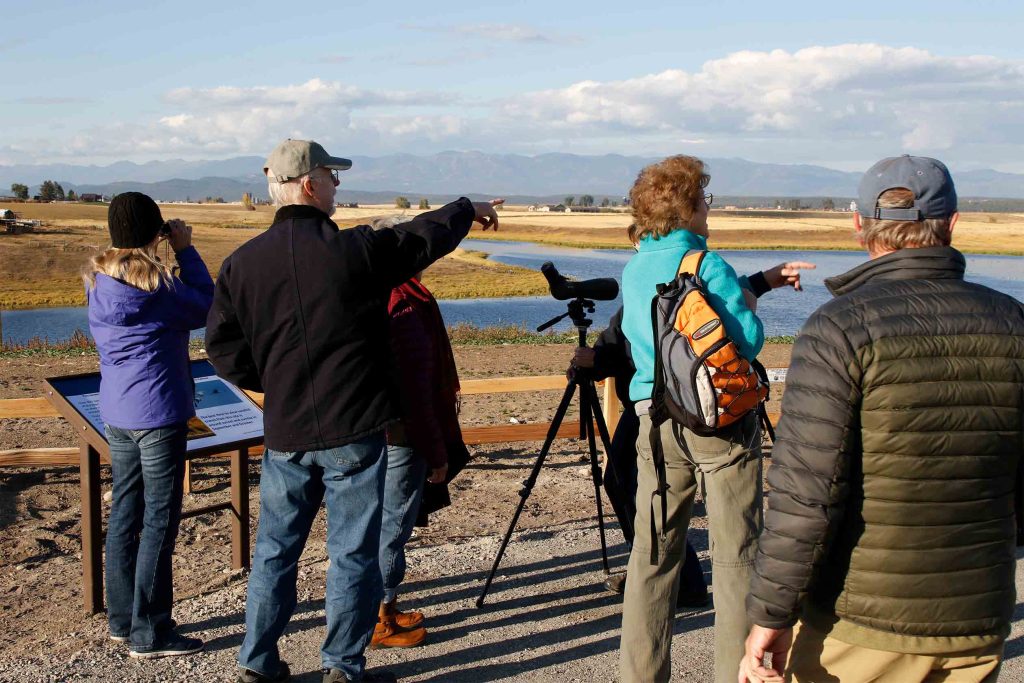West Valley Wetlands
Conservation of a Flathead Valley Ecological and Community Treasure

Hundreds of elegant, long-necked sandhill cranes, standing five feet tall with wingspans of over six feet, grace the Flathead Valley each fall. The birds gather in a staging area of about four square miles in the West Valley, northwest of Kalispell, to refuel before migrating south. This region is the only known staging area in the Flathead Valley. They are attracted to the unique pothole wetlands and neighboring agricultural fields in this special part of the Flathead, feeding in the rich farm fields of the area during the day and roosting in its unique pothole wetlands at night.
The Grosswiler family owns a large portion of this special place. In 2018, they protected almost 400 acres of this sandhill crane habitat with a conservation easement. The conservation easement keeps hundreds of acres of rich farmland in agriculture and protects an exceptional 45-acre pothole wetland. The property provides critical habitat for tens of thousands of waterfowl, 20 species of shorebirds, and 180 total bird species.
The agricultural legacy of the Grosswiler family, who have been farming west of Kalispell for over 100 years, is also preserved through this easement. Initially homesteading 160 acres in the West Valley in 1900, the family expanded their agricultural operations to over 3,000 acres. Over time, the family has sold portions of their land, but they still farm almost 1,400 acres in the West Valley. The easement ensures that at least a portion of their land remained in agriculture, fulfilling the family’s wishes.
This important farmland and bird habitat was protected by the Grosswiler family through purchased conservation easements, which provide cash in exchange for maintaining agricultural use and protecting critical bird habitat. Most of the funding for the purchased conservation easements came from the Natural Resource Conservation Service Agricultural Land Easement and North American Wetland Conservation Act programs. In addition, over 80 partners and contributors from the community came together to help protect this ecological and community treasure.


Tanner Marvin, a member of the Grosswiler family, grew up on the land that is alive with the musical calls of sandhill cranes each fall. “Growing up we were always told that cranes are a sign of good luck and to take a second to reflect on what you have when you see one,” said Tanner Marvin. Now Tanner and his wife, Rachel Agan, are raising their children in their home on the family land. Tanner reflects “continuing farming in my great-grandpa’s honor is very meaningful to me, but more so, to know my children can continue that tradition – so we will have multiple generations living his legacy.”
“It is so important for land to be conserved,” says Tanner. “This valley is growing so rapidly that if we don’t do something to protect parts of it, we won’t have any wild left.
West Valley Bird & Wildlife Viewing Area
Most conservation easements do not allow public access, but Tanner’s family generously allowed a bird viewing area to be created for the public overlooking the unique pothole wetland and roosting area for sandhill cranes as part of the conservation project. This public bird and wildlife viewing area was developed and is administered by Montana Fish, Wildlife and Parks. It allows people from near and far to witness the epic spectacle of cranes in their fall staging area for generations to come.

Photos: Four sandhill cranes, by Stephen Tabone; Sunrise Over Grosswiler Wetland, by Steve Muller; Ribbon cutting at the West Valley Bird and Wildlife Viewing Area on the Marvin?Grosswiler conserved property in 2018: Catherine Baier (center), Tanner Marvin (right), his wife, Rachel Agan (2nd from right), and their family; Birdwatching Grand Opening at West Valley Bird and Wildlife Viewing Area, by Harley Mumma.
